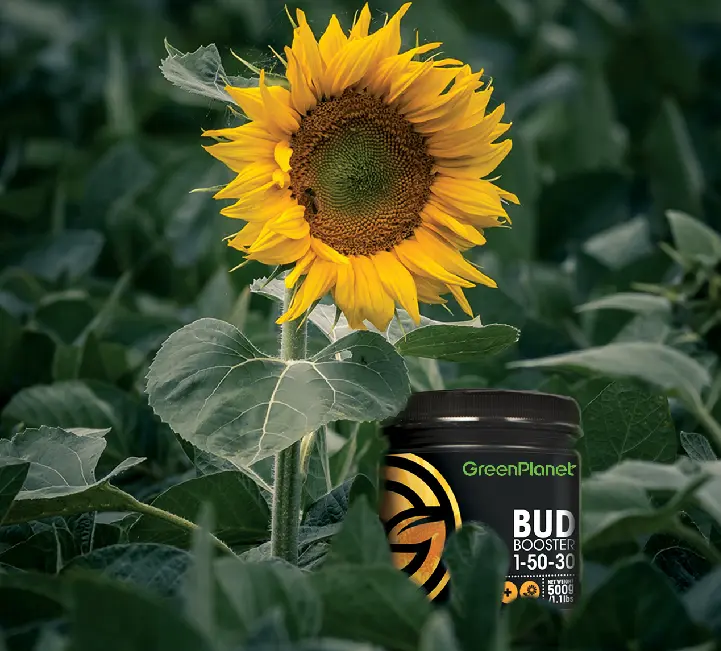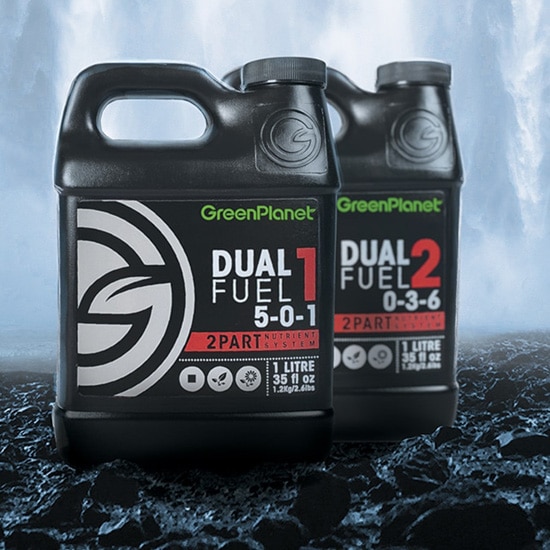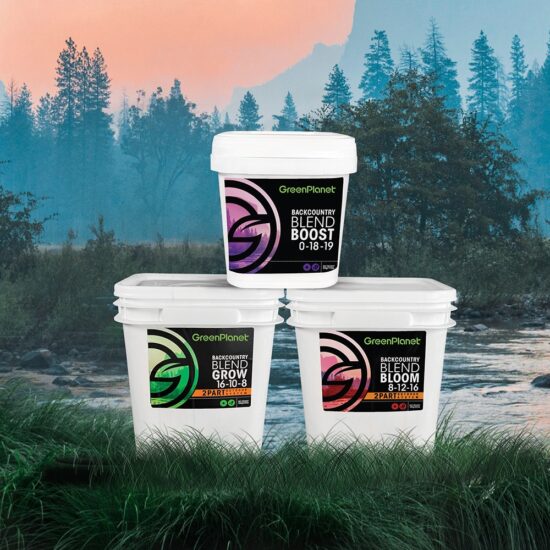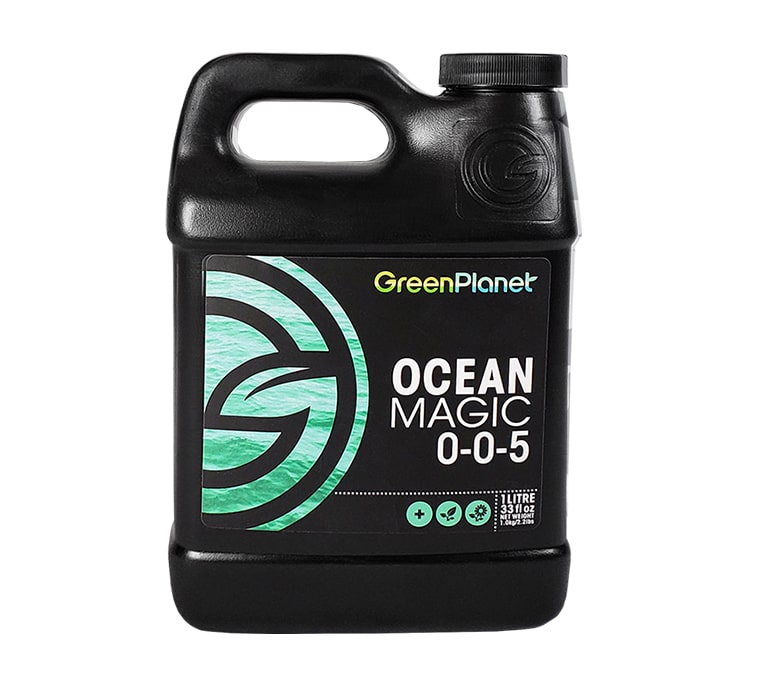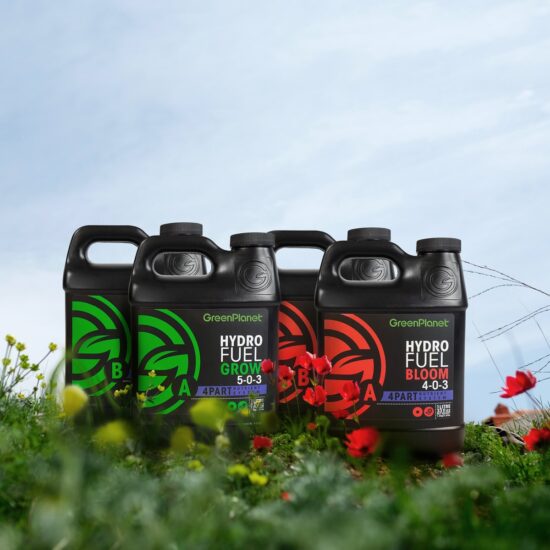What’s the Difference Between Dry and Liquid Fertilizer?

Unfortunately, not all fertilizers are created equal. That’s not to say that one product or feed program won’t perform as advertised, but as we’ve learned from experience, there are a mountain of factors that go into producing a bountiful harvest: plant genetics, environmental controls and growing systems usually trump the list of important inputs — fertilizer, on the other hand, whether that be liquid nutrients or dry fertilizers, are usually the last factor to blame for a less than success crop. However, we can’t discount the importance of quality inputs. That’s why choosing a fertilizer that’s right for you and your garden remains extremely relevant.
But how do we choose the right fertilizer? This, undoubtedly, is a challenging question to answer. It’s true — if you don’t know what you’re looking for, a wall-to-wall selection of plant food can be overwhelming. But have no fear, we’re here to help. Below, we’ll look at the difference between two popular choices of fertilizer: dry and liquid.
Things to Consider Before Choosing Dry or Liquid Fertilizer:
Before we look at the advantages of either dry or liquid fertilizer, it’s necessary to ask yourself a few questions. But even more important, ask yourself about your goals. Why? Well, your individual goals will drive the outcome of your crop. We know, it sounds strange. But consider this: if you’re a lazy gardener (take no offense, we exist), you’ll probably lean towards a nutrient system that requires little to no effort. However, if you’re the type of person who wants to manage every control in the garden, then there are more complex programs as well. Overall, before you commit to a specific nutrient system, consider the questions below:
3 Questions to Ask Yourself
1. Do I want to grow organic crops?
If the answer is yes, consider selecting only organic fertilizer. This will narrow down your options for nutrient programs, but that only makes choosing easier! Check out Medi-One
2. What kind of system will I be using?
In other words, how will you be growing your plants? Hydroponically? In soil? In coconut fiber? Indoors, or outdoors? All good questions to consider, as your growing method will dictate the appropriate fertilizer, again, narrowing the field of available choices.
3. How much experience do I have?
Just like someone told you when you were young, “learn to walk before you run”. Annoying, yes, but sound advice. There’s no shame in being inexperienced. But if you are new, it’s important to question your experience with plant food. Some fertilizers are more complicated than others. So, consider choosing something easy-to-use with simple instructions.
What’s the Difference Between Dry and Liquid Fertilizer?
First things first: it’s not that one is better than the other. There are, however, differences; the most obvious being that dry fertilizers are made of powder, or granular minerals, and liquid nutrients are concentrates formulated from minerals or organic material dissolved in water. This difference dictates how the fertilizer will be used.

For example, liquid fertilizer will be measured and mixed with water before being fed to plants, while dry, granular products like BackCountry Blend will be broadcast on top of the medium and will slowly dissolve into the rootzone. Some dry fertilizers, however, like Bud Booster, will follow the same mixing and measuring protocol as liquid fertilizers, so be sure to consult the instructions thoroughly.
In short, the biggest difference between dry and liquid fertilizers are the advantages growers can expect from using one or the other. We’ve created a list below of the advantages of using either dry or liquid fertilizer in the garden:
Advantages of Dry Fertilizer:
- Cost Effective — Dry fertilizers are famously affordable. If you’re on a budget, this advantage might be the deciding factor. Read, “Our Affordable Fertilizer Solution for Outdoor Growing”.
- Easy-to-Use — Simple and straightforward, dry fertilizers are great for new, inexperienced growers, or ‘lazy’, easy-going gardeners.
- Simple to Store — Dry fertilizers are compact and easy to store. They’re also hyperconcentrated, so a little goes a long way.
- Scalable — Coming in at a low-cost, easy-to-use and simple to store, dry and granular fertilizers are great tools for commercial gardeners.
Among all the variables which determine a successful growing season, access to quality nutrients is perhaps the most important. Any experienced grower can tell the difference between an outdoor crop well sown in rich nutrients, and one grown in a medium that leaves the plant wanting for more.
Advantages of Liquid Fertilizers:
- Intricate Formulas — Liquid fertilizers are formulated with interesting and unique ingredients. Take GreenPlanet’s Massive as an example. You’d be hard pressed to find a similar fertilizer in powder form.
- Specific Uses — Liquid feed programs often include products that have specific uses, like root expansion, micronutrient enrichment and stalk hardening; this, arguably gives the grower more control in the garden.
- Preciseness — Sure, liquid nutrients might be more time consuming, but using them correctly will prevent unwanted issues like overfeeding or nutrient deficiencies.
- Quality Outcomes — Serious growers, those who value quality above all else, tend to rely more heavily on liquid nutrients.
So, there are differences between dry and liquid fertilizers, but it’s not that simple — it all depends on how you want your garden to perform. Want to learn more about our fertilizer? Contact a member of the GreenPlanet sales team, or your local garden supply store for product information and purchasing inquiries.
What feed program is right for you? Answering this question depends on a few simple, yet important considerations, including gardening practices, previous experience, and cultivation system of choice.
Check out our Resource Centre for more product information
Read More
- What are Additive Nutrients?An additive nutrient, or nutrient supplement, can be described as any plant food product that seeks to enhance natural patterns of development. Unlike base nutrients,… Read more: What are Additive Nutrients?
- Why It’s Important to Test the pH of Your Run-OffIf you’ve recently noticed some leaf discoloration, mutation, or poor growth, it’s quite likely an inadequate pH range is the culprit behind these issues. pH… Read more: Why It’s Important to Test the pH of Your Run-Off
- What’s the Difference Between Dry and Liquid Fertilizer?Unfortunately, not all fertilizers are created equal. That’s not to say that one product or feed program won’t perform as advertised, but as we’ve learned… Read more: What’s the Difference Between Dry and Liquid Fertilizer?













